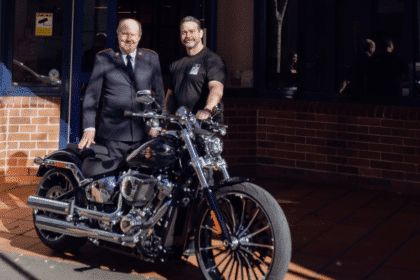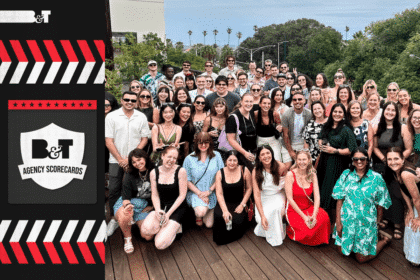For years, radio advertising has been an afterthought—underestimated, undervalued, and often executed poorly. Yet new research from System1, presented at Commercial Radio & Audio’s (CRA) HEARD audio showcase, confirms what those in the industry have long suspected: radio is an untapped powerhouse.
Not only does audio offer affordable mass reach, but when creative fluency is perfected, radio can double the effectiveness of an entire media campaign. While radio has long been seen as a secondary medium to television and digital advertising, the data suggests that this perception is not only outdated but actively hindering brand growth. System1’s findings reinforce that radio, when used effectively, offers exceptional brand-building potential and enhances the effectiveness of other media channels.
Andrew Tindall, senior vice president of global partnerships at System1, made this point clear at the event. “Radio has an incredibly broad reach. It’s incredibly trustworthy. It’s incredibly affordable. And that leads to effective outcomes”.
Yet, despite this, System1’s analysis of 56 Australian audio campaigns with over 8,000 listeners revealed a glaring issue: not a single ad achieved ‘Strong’ or ‘Exceptional’ fluency—a measure of how well an ad connects a brand to its audience. On average, only 68% of listeners could correctly link an ad to the correct brand. This lack of strong brand association is a massive missed opportunity, especially considering, according to Tindall, that radio has the potential to double brand effectiveness when used correctly.
For Justin Ladmore, managing director for media at Enigma, these findings were a wake-up call. “It was a reminder—more a kick up the butt—of how powerful radio really is. If you get it right, that is. It hammered home that creative is everything for radio and can’t just be a last-minute afterthought once production for the TV ad has wrapped up”.
So, what makes a great radio ad? And why is audio still being ignored by so many marketers?
Why Creativity Is the Missing Link in Radio Advertising
System1’s research identifies four critical factors that determine the effectiveness of a radio ad: branding, memorability, emotional engagement and entertainment value. These elements ensure that an ad not only reaches the audience but leaves a lasting impression that translates into real-world consumer behaviour.
Branding plays a crucial role in radio advertising success. Ads that incorporate distinctive sonic brand assets, such as McDonald’s jingle or Netflix’s “ta-dum,” establish immediate brand recognition and trust. These recognisable audio cues help reinforce a brand’s identity and contribute to long-term recall. Despite this, many Australian advertisers fail to prioritise sonic branding, resulting in campaigns that lack strong fluency.
Memorability is another key component. Ads that establish their brand early and avoid being boring perform significantly better in terms of recall. This is because listeners are often engaged in other activities while consuming audio content, meaning advertisers need to make an immediate impression. A well-crafted radio ad needs to captivate its audience within the first five seconds to ensure recognition and retention.
Emotional engagement is equally essential. Ads that make listeners feel something—whether through humour, storytelling, or music—are far more likely to be shared, talked about, and acted upon. When an ad leaves listeners with a positive emotional response, it increases the likelihood of brand association and consumer action.
Ads with more entertaining “right-brain” creative features such as character, story, dramatic pauses, humour and music dramatically increase positive emotional engagement, leading to a possible four times more listener behaviour change.
Despite these clear advantages, many brands continue to overlook radio as a serious branding tool.
Andy Maxwell, co-founder of Earmax Media, believes misconceptions about audio advertising have prevented marketers from fully embracing it.
“Perhaps it’s down to the myth that it’s difficult to track and measure, which simply isn’t true. It’s also more time-consuming to buy audio media effectively, and the results don’t look the same as those from Search and Social used in performance marketing”.
“So perhaps it’s also down to the buyers in control of the budget and their own media consumption. But for any marketers looking to build their brand long term and invoke an emotional response from audiences through creative, audio can’t be overlooked,” Maxwell said.
Ladmore suggested that “radio has always been perceived as a ‘do’ channel”.
“The broadcast channel that does a great job in getting people to act quickly. Great for short-term promotions. It rarely gets mentioned as a great brand-building channel. It was great to see the media mix modelling results from Analytics Partners that debunked this perception, showing the positive brand effects when radio – when executed properly – is introduced to a campaign and the positive synergy it has with the other channels being used”.
This neglect of radio as a brand-building tool is particularly evident in the failure of many brands to establish distinctive sonic branding.
The Power of Sonic Branding
Despite the clear impact of audio branding, no Australian radio campaigns tested by System1 achieved strong sonic branding recognition. This is a significant missed opportunity in a world where consumers can instantly recognise brands like Netflix, Intel, or even Law & Order from a single sound cue. Australian brands are failing to capitalise on the branding power of sound, which means they are losing valuable brand-building potential.
McDonald’s has long understood the value of audio identity and is a key proof that when done well, sonic branding can be incredibly effective. The company has used its iconic “I’m Lovin’ It” jingle for over 20 years, and it remains one of the most recognisable brand sounds in the world.
What Makes a Great Radio Ad?
Ralph van Dijk, founding creative director at Eardrum, emphasised that creating a great radio ad is an art form. Unlike visual media, where brands can rely on logos and imagery, audio must create a world through sound alone.
To achieve this, four key elements are essential:
First, experience matters. A well-crafted script must sound natural, engaging, and effortless, even though it takes precision to execute effectively. “Writing for the spoken word is a skill that is becoming increasingly rare, and directing voices to sound authentic requires years of practice,” van Dijk explained.
Second, engagement is critical. The best radio ads trigger imagination, pulling audiences into a shared experience rather than delivering a one-way message. “The listener should be the co-author of your radio ad. By intriguing them with interesting characters, vivid scenes and an entertaining story, they go from passive to active listening. More importantly, the mental pictures they form will live longer in their memory,” he said.
Third, sonic branding and consistency are non-negotiable. A brand’s audio identity should be instantly recognisable across multiple campaigns. This means ensuring that jingles, voiceovers, and sound cues remain consistent, reinforcing the brand’s long-term presence in consumers’ minds. “A consistent format and distinctive sonic branding will ensure your radio ad generates a long-term brand effect for those out of market”.
Finally, relevant cleverness makes all the difference. A well-executed radio ad should intrinsically link its message to the brand in a way that is both clever and meaningful. “The cleverness gets the listeners’ attention, but without a pack shot to rely on, the concept needs to be intrinsically linked to the brief”.
When these elements come together, the result is radio advertising that is not just heard but remembered.
By contrast, dull, overly rational ads fail to engage audiences, leading to wasted ad spend. In fact, System1 found that 50% of Australian radio ads were so uninspiring that they were unlikely to change consumer behaviour.
“Great radio advertising isn’t just heard, it’s remembered,” said Lizzie Young, CEO of CRA. “Brands that embrace creative fluency will see stronger recall, more engagement, and ultimately, better business outcomes. This research proves the power of radio when it’s creative, memorable, and deeply connected to the brand.”
Andrew Tindall’s research leaves no room for doubt: radio is one of the most effective channels available, but it’s being misused. The advertising industry needs a mindset shift. Radio is not just for promotions—it’s a brand-building powerhouse.
Justin Ladmore puts it best: “Get the creative right, and radio becomes an emotionally engaging, memorable, brand-building channel that, when integrated into a wider multi-channel strategy, makes all the other channels look good”.
For marketers looking to cut through in an oversaturated media landscape, it seems that radio isn’t the past—it’s the future.








